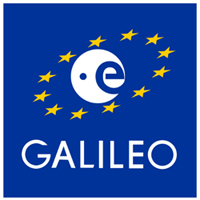This summer, French railway company SNCF performed successful tests of an autonomous train, using Galileo-enabled receivers. The vehicle ran a distance of four kilometers with the help of remote control. SNCF intends to develop its own prototypes of autonomous freight and passenger trains by 2023.
The company had already begun installing Galileo-enabled receivers aboard all of its 5000 high-speed trains (TGV) with the immediate goal of providing enhanced passenger services (real-time, precise train location information to those onboard and those waiting at stations down the line) and the eventual goal of autonomous operation. “Some 320 trains are expected to be Galileo-ready by the end of 2019,” said Antoine Barre, head of train localization projects at SNCF. The company carries 70 million individual passengers annually.
European GNSS Agency (GSA) Executive Director Carlo des Dorides told a European train safety conference earlier this year that GNSS is one of the technologies that will “define the rail system of the future.” He said GNSS is already being used to track rolling stock (more than 30,000 wagons of German rail freight company DB Cargo are equipped with Galileo-enabled telematics devices), and in passenger information, traffic management and predictive maintenance systems. Further, it will contribute to the future evolution of the European Rail Traffic Management System (ERTMS).
Des Dorides noted, however, that in integration of GNSS into the train signaling system to be harmonized across Europe, a key ERTMS goal, progress has been slower. “Our partners in Shift2Rail are using [2017 test] results to define the suitable architectures for GNSS inclusion in the ERTMS, hopefully within the next release planned for 2023.”
Currently, signalling is enabled by equipment installed along rail tracks that requires regular inspection and maintenance. Accurate and reliable geolocation using GNSS will enable rail networks to reduce the cost related to the infrastructure. Receivers installed in the train and connected via wireless networks should considerably reduce the costs of operation, maintenance and renewal of the network.
Highly precise geolocation is a key element for autonomous train operation, which can increase the density of trains operating in the network while at the same time improving safety and reliability of customer services.
Rail equipment manufacturer Wabtec contracted with Septentrio earlier this year to provide GPS/GNSS receivers aboard its freight locomotives. Wabtec is implementing the receivers in its GoLINC Edge platform to provide positioning, connectivity, data storage and Positive Train Control (PTC) enhanced with the adoption of higher-precision positioning technology.
“We need to know accurately the position, velocity and attitude in real time to enable autonomous train systems,” said Corinne Talotte, director of innovative technologies at SNCF. “We are developing a multi-sensor system for localization based on GNSS but combined with other inertial sensors. This hybrid approach is inspired by the approach already adopted in the aviation sector. SNCF is undertaking a number of demonstrations with several partners, including the ERTMS user group and the Shift2Rail Joint Undertaking.”
The use of autonomous trains with innovative network control systems should enable SNCF to increase throughput on its lines. The objective is to carry more people and more goods, with greater regularity, improved energy efficiency and better economic performance, while ensuring continuing high levels of safety.
SNCF believes that the autonomous train is the immediate future; this belief led to the first remote-controlled freight train test in July, cited at the beginning of this article. The first prototypes of freight and passenger trains with autonomous driving capability are predicted to arrive in 2023, with gradual implementation.
Photo: SNCF. Information in this article was provided by the GSA.





